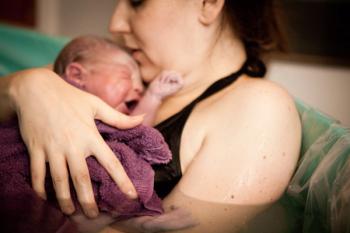
Endometriosis-linked infertility associated with higher pregnancy rates
Women with endometriosis-related infertility are more likely to conceive than those with other causes of infertility, a 30-year study shows.
A 30-year population-based study involving more than 4 million women in England found that those with infertility associated with endometriosis were significantly more likely to become pregnant than women with infertility from other causes. The findings were presented at the 41st Annual Meeting of the European Society of Human Reproduction and Embryology (ESHRE) on July 2, 2025, in Paris, France, and will be published in Human Reproduction.1,2
The study, conducted as part of the EU FEMaLe (Finding Endometriosis through Machine Learning) consortium, analyzed linked primary care, secondary care, and maternity records of women aged 13 to 50 years who presented with infertility or symptoms related to endometriosis between 1991 and 2020. Researchers identified 111,197 cases of surgically confirmed endometriosis via laparoscopy or laparotomy. Among these, 6.1% (14,904) of women had both a diagnosis of endometriosis and a documented history of infertility.
The study found that 57.4% (8,556) of women with both infertility and endometriosis received their infertility diagnosis before their surgical confirmation of endometriosis. This supports ongoing concerns about diagnostic delays, a known barrier to early management of the condition. Endometriosis, a chronic disease in which endometrial-like tissue grows outside the uterus, is known to cause pelvic pain and is a leading contributor to female infertility.
Women with infertility were more than twice as likely to be diagnosed with endometriosis compared to women without infertility. However, despite the association between endometriosis and reproductive difficulties, women in the study with endometriosis-associated infertility had markedly higher conception rates compared to women with other causes of infertility, such as ovulatory dysfunction, tubal factors, and unexplained infertility. In total, 40.5% of women diagnosed with endometriosis had at least 1 pregnancy during the study period, regardless of infertility status.3,4
“Endometriosis can vary in how it affects fertility. Women with milder forms may retain good reproductive potential, especially if the condition is diagnosed and managed early,” said lead author Dr. Lucky Saraswat, of the Aberdeen Centre of Women’s Health Research, University of Aberdeen. “There’s also moderate-quality evidence suggesting that laparoscopic surgery can improve pregnancy rates in some with endometriosis.”
Saraswat noted that women with endometriosis may also be more likely to seek clinical evaluation earlier due to increased public and professional awareness of the association between endometriosis and infertility.
“While fertility remains multifactorial, with factors such as age playing a significant role, our findings offer robust, evidence-based data that can significantly enhance fertility counselling for women newly diagnosed with endometriosis – including information on the likelihood of infertility, overall pregnancy rates and outcomes, and how those outcomes compare to other causes of infertility,” said Saraswat.
“These insights can empower women to make informed reproductive decisions,” she added. “They also provide a strong foundation for future research into how factors such as disease stage, site, surgical treatment and use of assisted reproduction influence pregnancy outcomes in women with endometriosis.”
Professor Anis Feki, MD, PhD, chair-elect of ESHRE, commented, “This study shows that women with endometriosis-related infertility are significantly more likely to conceive than those with other infertility causes. These findings provide valuable reassurance for patients and underscore the importance of early diagnosis and tailored treatment strategies.”
The study contributes to a growing body of research highlighting the reproductive outcomes of women affected by endometriosis and the clinical importance of reducing delays in diagnosis and treatment.
References:
- Saraswat L, et al. Presented at: European Society of Human Reproduction and Embryology (ESHRE) 41st Annual Meeting; July 2, 2025; Paris, France.
- European Society of Human Reproduction and Embryology. Against the odds: Endometriosis linked to four times higher pregnancy rates than other causes of infertility, new study reveals. Eurekalert. July 1, 2025. Accessed July 10, 2025. https://www.eurekalert.org/news-releases/1088675
- National Institutes of Health. Endometriosis. NIH. Accessed July 10, 2025.
https://www.nichd.nih.gov/health/topics/endometri - World Health Organization. Endometriosis. WHO. Accessed July 10, 2025.
https://www.who.int/news-room/fact-sheets/detail/endometriosis
Newsletter
Get the latest clinical updates, case studies, and expert commentary in obstetric and gynecologic care. Sign up now to stay informed.











